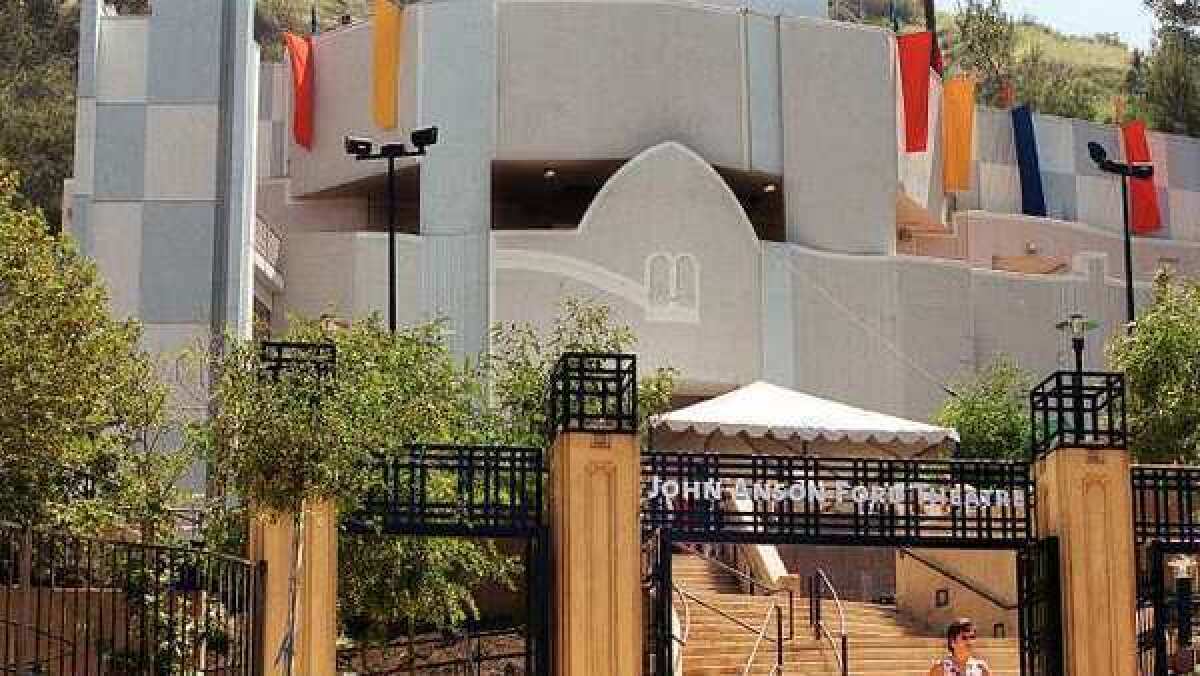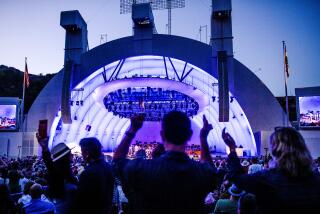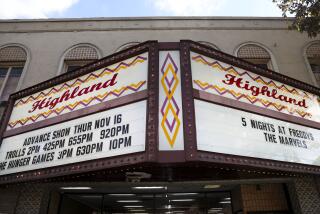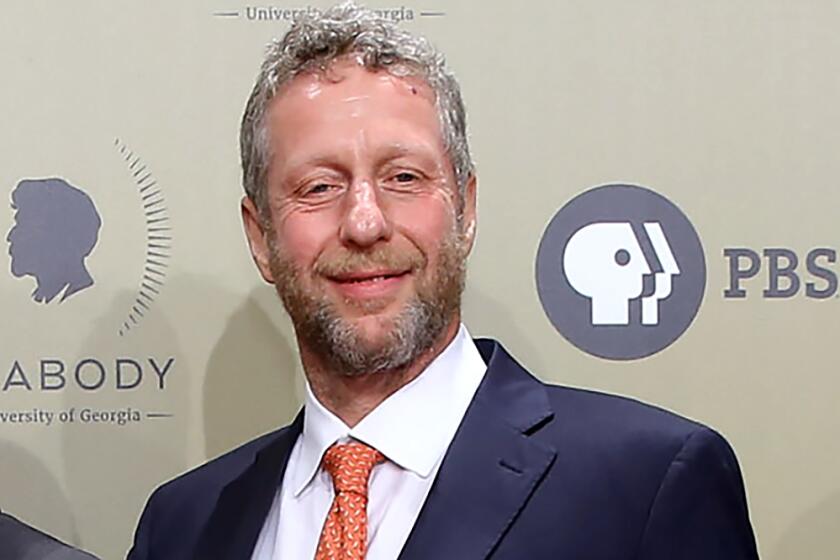Ford Amphitheatre to close next summer for $19.7-million makeover

The rumble of construction machinery and the thwack of carpentry will be the summer sounds for 2015 at the John Anson Ford Amphitheatre, which is closing for renovations for at least a year and a half after its current season ends in mid-September.
While the $19.7-million makeover is underway, the dancers and musicians who usually hold sway at the 1,196-seat county-owned outdoor theater in Hollywood will fan out to other, as yet undetermined venues around Los Angeles County.
“We will be taking the Ford on the road,” said Laura Zucker, director of the Los Angeles County Arts Commission, the government agency that operates the amphitheater.
When the troupes return to the Ford in spring 2016, they and their audiences will enjoy a new sound-and-lighting system and a new stage that’s expected to be much less punishing for dance groups -- some of which Zucker said have avoided the Ford because it’s so unforgiving to dancers’ ankles and knees.
The stage’s current elevated back tier is concrete, the front has plywood surfacing on top of concrete, and the stage tilts downward toward the audience to help rainwater slide off. Zucker said the replacement stage will still be two-tiered, a feature performance companies like, but it will be all wood, with no concrete and no downward slope.
Under the assumption that heavy rains will return again someday to Southern California, the project also will install a new drainage system for runoff water that comes out of the hillside directly behind the stage. Zucker said flooding on and below the stage has been a problem when it does rain heavily, including one year when mud washed into the 87-seat indoor theater, known as Inside the Ford, that’s beneath the amphitheater.
The coming project also will relieve a sense of claustrophobia for performers who need to get from one side of the stage to the other without being seen. There’s currently no hidden route above ground, and Zucker said the existing passageway beneath the stage is an “incredibly narrow corridor that will be significantly widened.”
The coming project will be the second phase in a step-by-step improvement plan for the Ford, which sits on the opposite side of Cahuenga Boulevard from the Hollywood Bowl, another county-owned venue that’s much bigger and more famous, but not much older. The Ford opened in 1931, 10 years after the Hollywood Bowl.
Unlike the Bowl, a magnet for some of the biggest stars of classical and pop music, the Ford has a communitarian agenda that features performers who aren’t household names.
“We partner with L.A.-based arts organizations and provide a support system that allows them to produce their work well and keep the lion’s share of the income and ticket sales,” Zucker said.
The idea is to help newer and less renowned groups acclimate themselves to performing in a venue of more than 1,000 seats, where they can reach bigger audiences and become better known.
“It’s a unique model for L.A. and I think it plays an important role in the arts ecosystem,” Zucker said.
She said the production budget for the traveling 2015 season will be about $750,000 -- the same amount the county would have provided at the Ford.
The $19.7-million expenditure by the county follows a $7.5-million initial phase in 2012-13 that included installing new seats, repairing leaks and addressing other wear-and-tear issues. But it was timed to avoid losing a summer season.
The Arts Commission has developed preliminary plans that would go far beyond the $27.2 million allocated so far. They call for turning the four-acre site, which is part of a 32-acre county park, into a much more elaborate cultural center.
The transformation would happen in gradual stages that Zucker estimated would cost an additional $100 million. It calls for two 250-space parking garages to replace the existing 380-car surface lot. A 299-seat indoor theater and what Zucker calls a “destination restaurant” would be built atop one of the garages, and a 99-seat indoor theater would be built into the other parking structure. Other features would include a new box office and management offices, an outdoor terrace that would include a performance area and a three-quarters-of-a-mile hiking trail through the hills near the Ford.
The Arts Commission plans to seek the project’s first official blessing soon from the Board of Supervisors: approval of a 91-page environmental impact report. An OK of the report would not commit the county to funding the plan and building it, but it would set out a blueprint for how to proceed. In a best-case scenario, Zucker said, funding could be secured and the plan could be realized by 2020. There’s an Aug. 8 deadline for public comments on the report via letter or email.
The Ford has its own private nonprofit support group, the Ford Theatre Foundation, but Zucker said it doesn’t have the fundraising clout of the nonprofit boards that partner with the county to run the Los Angeles County Museum of Art and the Natural History Museum of Los Angeles County, or the Los Angeles Philharmonic, which holds a county contract to run the Bowl.
Because it’s in a county park, Zucker said, the arts venues could qualify for special funds reserved for park development.
LACMA has rolled out a tear-down-and-rebuild plan encompassing more than 400,000 square feet of galleries, and its director, Michael Govan, recently said that he hoped the county, which would own the new structure, can provide about $100 million toward its estimated $500-million construction cost. The Music Center has big-dollar capital plans focusing on remaking its plaza and improving the 50-year-old Dorothy Chandler Pavilion, including expanding a limited backstage that has posed problems for its main tenant, Los Angeles Opera.
With big plans also afoot for the Ford, one possible avenue to raise hundreds of millions of dollars could be to package proposed improvements at county-owned venues and put the question of funding them to voters in a bond election comparable to one that took place in 2002.
Voters then were asked whether they wanted to borrow $250 million for cultural projects, which would have meant a modest increase in property taxes to guarantee the bonds’ repayment. The goodies included about $100 million each for an earlier LACMA tear-down/rebuild plan and new galleries for the Natural History Museum of Los Angeles County, and $15 million each toward a performing arts center at Cal State Northridge and a cultural center in the El Pueblo de Los Angeles historic district in downtown L.A.
Almost 61% of the voters said yes -- a landslide in the vast majority of states, but a defeat in California, which requires a two-thirds majority to approve tax-backed bonds (except for public education bonds, which need 55% of the vote).
Zucker said she hasn’t heard any talk yet about a bond issue for looming cultural needs. Outgoing Supervisor Zev Yaroslavsky has mentioned the possibility of a bond issue that would help address the Music Center’s needs -- but only if state law were changed so that cultural bonds could pass with 55% of the vote.
Follow boehmm of the L.A. Times for arts news and features
More to Read
The biggest entertainment stories
Get our big stories about Hollywood, film, television, music, arts, culture and more right in your inbox as soon as they publish.
You may occasionally receive promotional content from the Los Angeles Times.







